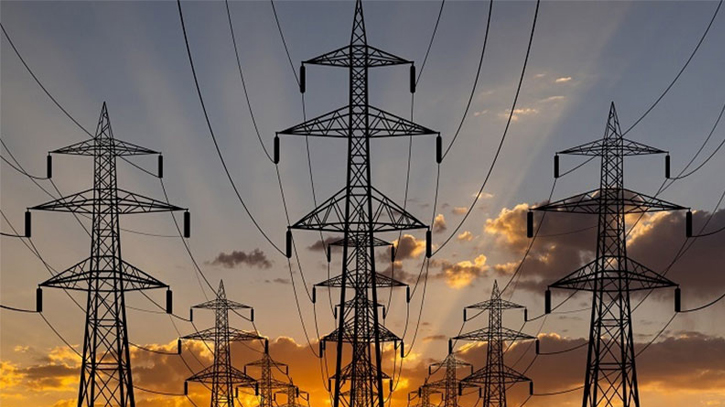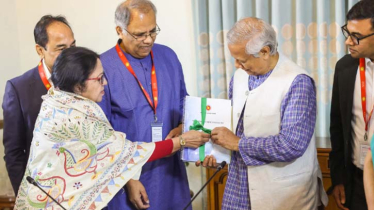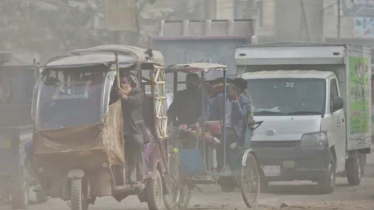
Photo : Collected
Some 29 more power generation projects, having a combined capacity of 10,881 MW are now under construction, even as the country struggles to manage the costs of overcapacity to the tune of 40 percent in the power sector.
The recently published “Annual Report 2022-23” of the Bangladesh Power Development Board (BPDB)contains information on the under-construction 29 power generation projects.
It said, “Diversified fuel-based power generation expansion plans are adopted to meet the ever growing electricity demand in Bangladesh. As a part of these plans, 29 power generation projects of capacity 10,881 MW are now under construction, out of which, BPDB is directly implementing 5 projects of capacity 730 MW and 17 projects of capacity 4,230 MW through the IPP sector.”
The annual report further said, “The plan envisages around 20,416 MW new generation addition from July 2023 to December 2027, out of which 728 MW capacity has already been added up to September 2023.”
Many experts in the power and energy sector believe that keeping a 40 percent surplus, adding another 10,881 MW to the national grid in the next three years will further increase the burden of capacity payments, which are written into contracts with independent power producers, as the private sector players owning power plants are referred to.
Of the total 29 projects, 5 are in the public sector while17 are in the private sector as independent power producer (IPP) projects, the annual report said. The ownership structure of the remaining 7 is not clear, with some hybrid combination possible.
According to available data, the country’s overall power generation, combining grid capacity and off-grid (mainly captive) power, increased by about 5000MW in 2023 to reach a new benchmark of 30,700MW, although with demand failing to keep up, this is expected to lead to higher capacity payments for the government.
This is disclosed in available data from the state-owned Bangladesh Power Development Board (BPDB), Bangladesh Energy Regulatory Commission (BERC) and Sustainable and Renewable Energy Development Authority (Sreda).
The BPDB data shows that of the 5000MW new power generation, some 3,343MW was added to the national grid by the import electricity from India and production from newly set up local power plants while about 1400MW came from off-grid captive and off-grid solar power.
It also shows that the country’s installed grid-connected power generation capacity has reached to 25,951 MW on December 30 in 2023 from 22,608 MW in 2022 showing a capacity enhancement of 3343 MW.
Beyond the national grid, as per BERC data, the captive power generation has increased by 1379MW to reach 4760 MW in 2023 from 3,381MW in 2022.
The captive power plants were mainly set up by industries for their own consumption to get uninterrupted power supply as the grid power does not guarantee uninterrupted supply.
Sources in the power sector said that despite more than 40 percent surplus power generation in the country, still many industries prefer to use their captive power for uninterrupted supply.
Together the new off-grid captive power and grid-connected power has pushed up the country’s total power generation capacity to 30,711 MW in 2023 from about 25,700 MW at the end of 2022.
The officials said the import of 1600 MW from India’s Adani Group and setting up of a number of coal-based new power plants played a vital role in increasing power generation by 5000 MW in a single year.
Although this capacity enhancement in power generation is a pleasing development on the face of it, especially given the country’s long history of struggle with power shortages, BPDB officials are also quick to point out that the growing surplus capacity would also lead to a rise in capacity payments, whereby IPPs get paid even for the electricity the government doesn’t need from them.
They said that the new power plants being added to the grid were set up by the IPPs, or independent power producers (the private sector firms investing in the power sector, by building and often operating the plants), and the BPDB has an obligation to purchase power from them - to not let their investment go to waste or end in loss. Having them exit the power sector due to losses would be a bigger blow to BPDB's long-term vision.
The increasing burden of capacity payments may pinch the government, as well as the consumer, harder if the dollar crisis prevailing in the country persists.
According to the Centre for Policy Dialogue, a Dhaka-based think tank, capacity payments to private, rental, and quick rental power plants have increased from Tk 5,376 crores in FY2017 to as high as an estimated Tk 28,000 crores in FY 2023.
In 2024, surplus electricity generation capacity is projected to rise to 50 percent from the existing 40 percent, as the country’s peak hour demand is about 16,000 MW, according to a top BPDB official.
It would mean even at peak demand, half the plants would be surplus to requirements, and thus lie idle.
Official sources recently said that the power and energy sectors of Bangladesh have been hit by severe cash crunch, especially the US dollars, piling up a huge backlog in payment of their import bills.
According to official sources, the sectors’ cumulative outstanding bills have now jumped to about $5 billion of which the backlog amount in the power sector is about $4 billion (about Tk 43,093 crore), and the remaining 1 billion is in the energy sector.
State Minister for Power, Energy and Mineral Resources Nasrul Hamid also admitted the severity of the crisis.
“Actually the crisis is not of local currency. Somehow we can manage it. But the main crisis is of dollar. We’re not getting dollars from Bangladesh Bank as per our needs,” he told media in a recent interview.
Messenger/Fameema








